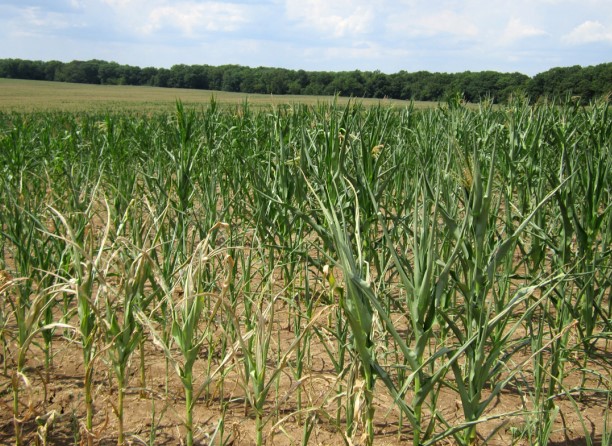
Agricultural News
Drought Conditions Make Corn Dangerous to Feed to Livestock, MU Expert Says
Wed, 15 Aug 2012 11:30:44 CDT

As the hot summer and severe drought continues across much of the Midwest, thousands of farmers are being forced to abandon ruined corn crops. With much of the year's corn crop expected to yield much less grain than anticipated, many farmers are left to harvest their fields early to salvage what nutritional value they can to feed their animals, especially cattle. Tim Evans, an associate professor of veterinary pathobiology and toxicology section head at the Veterinary Medical Diagnostic Laboratory at the University of Missouri College of Veterinary Medicine, warns farmers and livestock producers that drought-damaged corn plants can pose a risk to animal health.
"During severe drought conditions, corn plants, especially those heavily fertilized with nitrogen, can accumulate a chemical called 'nitrate'," Evans said. "This chemical can be very harmful to animals, especially cattle, if they eat corn plants or other vegetation containing too much nitrate. Eating plants with too much nitrate can cause damage to red blood cells, resulting in lethargy, miscarriage, and even sudden death."
Evans says that in normal conditions, corn crops typically absorb nitrate into only the lower 12-18 inches of the stalk, which does not have to be fed to animals. However, during severe drought conditions, high concentrations of nitrate can accumulate in the upper portions of the stalk, which cattle and other livestock often eat.
Evans also says that many naturally growing plants and weeds in grazing pastures can accumulate nitrate during drought conditions, as well. These plants include many types of grasses and some weeds, which animals might be forced to eat because of limited pasture or hay available as forage for livestock. Evans encourages farmers to test the nitrate levels of their crops and pastures before allowing their animals to eat any of the plants. In addition, Evans suggests that corn plants being harvested early for making silage, which generally contain lower concentrations of nitrate, should be tested for nitrate prior to and after fermentation to determine the concentrations of nitrate being fed to cattle.
"Missouri farmers should definitely contact their local MU Extension offices for help in the preliminary stages of testing the nitrate concentrations in their crops," Evans said. "MU Extension workers have their boots on the ground all across the state and are truly a valuable resource for farmers who are worried about their crops and livestock."
Evans says that high nitrate levels in plants are generally not a danger to humans, but only to ruminant animals, such as cattle, which eat very large amounts of plant material daily. To locate the nearest MU Extension office, click here.
WebReadyTM Powered by WireReady® NSI
Top Agricultural News
More Headlines...




















